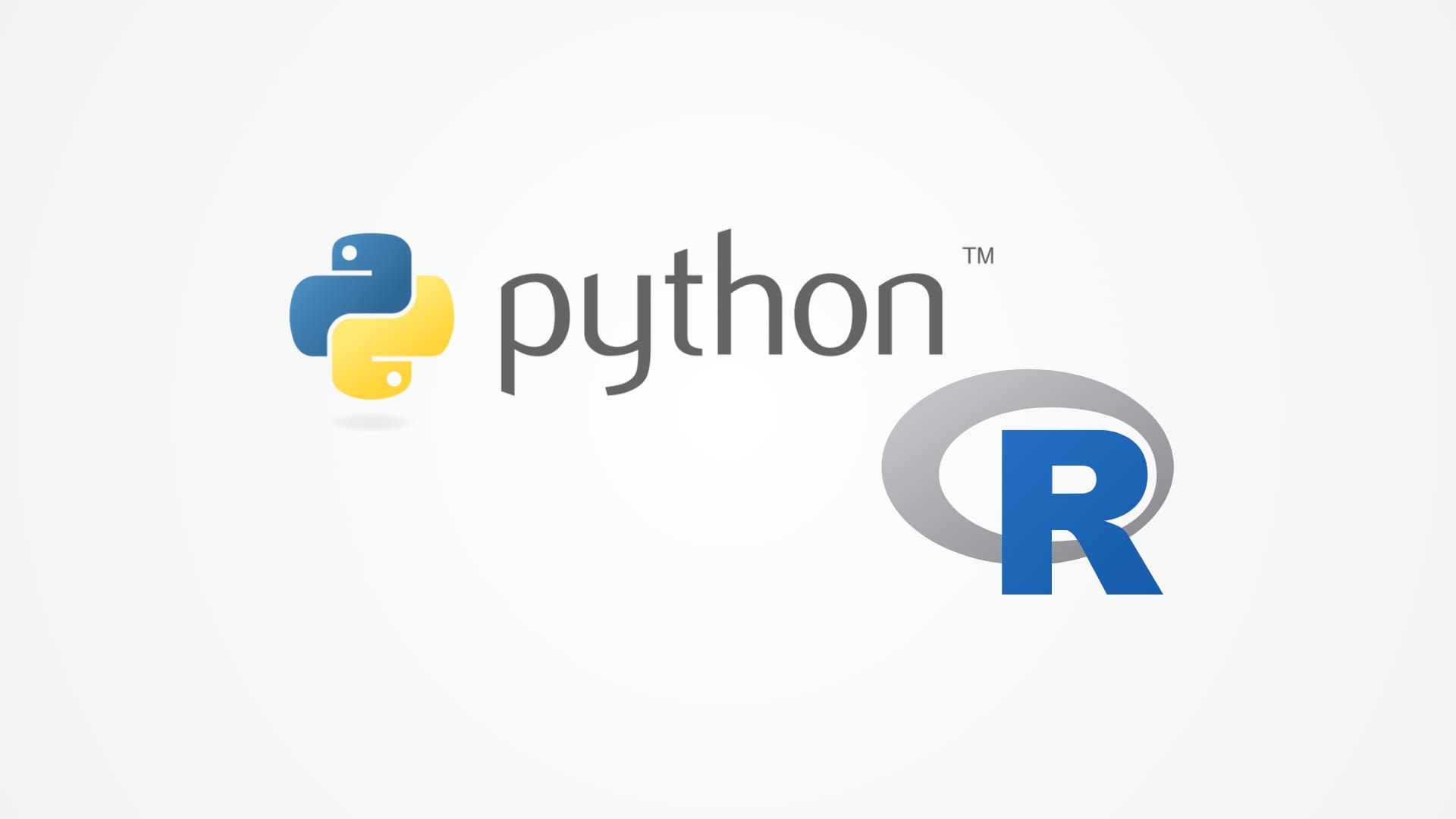Data mining is a powerful technique used to extract valuable information and insights from large datasets. In today’s digital age, where data is generated at an unprecedented rate, data mining has become an essential tool for businesses, governments, and researchers. It allows them to uncover patterns, predict future trends, and make data-driven decisions that can significantly impact their operations and strategies.
Data mining is often described as the process of discovering hidden patterns in data, but it goes beyond simple data analysis. It involves using sophisticated algorithms and statistical techniques to explore data and identify relationships that are not immediately obvious. These insights can then be used to optimize business processes, enhance customer experiences, detect fraud, and much more. For beginners, understanding the basics of data mining is crucial as it forms the foundation for more advanced fields like machine learning, artificial intelligence, and predictive analytics.
Understanding Data Mining
At its core, data mining is the practice of examining large datasets to find meaningful patterns, correlations, and trends. The process involves several key steps, including data cleaning, integration, selection, transformation, mining, and interpretation. Unlike traditional data analysis, which often relies on manual exploration, data mining leverages automated methods to sift through vast amounts of data quickly and efficiently.
Data mining is used across various industries, from retail and finance to healthcare and manufacturing. For instance, retailers use data mining to analyze customer buying patterns, enabling them to recommend products and optimize inventory. Banks use it to detect fraudulent transactions, while healthcare providers use it to predict patient outcomes and personalize treatment plans.
The Key Steps in Data Mining
Data mining is not a single action but a process that involves several stages, each critical to extracting valuable insights from data. Here are the main steps involved in data mining:
- Data Cleaning: The first step in data mining is to clean the data. Raw data often contains errors, missing values, and inconsistencies that can affect the accuracy of the mining process. Data cleaning involves correcting these errors, filling in missing values, and removing duplicate records to ensure the data is of high quality.
- Data Integration: In many cases, data is collected from multiple sources, such as databases, spreadsheets, and external systems. Data integration combines this data into a unified dataset that can be analyzed as a whole. This step is crucial when dealing with data from different departments or platforms.
- Data Selection: Not all data is relevant to the problem at hand. Data selection involves identifying and extracting the data that is most relevant to the specific mining goals. This helps to reduce the size of the dataset and focus on the most important information.
- Data Transformation: Once the relevant data has been selected, it often needs to be transformed into a format suitable for mining. This can involve normalizing data, creating new attributes, or converting categorical data into numerical form. Data transformation helps standardize the data and prepare it for analysis.
- Data Mining: This is the core step where algorithms are applied to the data to extract patterns and insights. Common data mining techniques include classification, clustering, regression, association rule mining, and anomaly detection. The choice of technique depends on the nature of the data and the specific objectives of the analysis.
- Pattern Evaluation: After mining, the discovered patterns need to be evaluated to determine their validity and usefulness. This step involves assessing the patterns against predefined criteria, such as statistical significance or business relevance, to ensure that the insights are actionable.
- Knowledge Representation: The final step is to represent the mined knowledge in a way that is understandable and useful to stakeholders. This often involves creating visualizations, generating reports, or summarizing the findings in a clear and concise manner.
Common Data Mining Techniques
Data mining encompasses a wide range of techniques, each suited to different types of data and analytical goals. Here are some of the most commonly used data mining techniques:
- Classification: Classification is a supervised learning technique used to categorize data into predefined classes or labels. For example, a bank might use classification to determine whether a loan application should be approved or denied based on historical data. Common algorithms used in classification include decision trees, random forests, and support vector machines.
- Clustering: Clustering is an unsupervised learning technique that groups similar data points together based on their characteristics. Unlike classification, clustering does not rely on predefined labels. It is often used in customer segmentation, where businesses group customers with similar behaviors or preferences to tailor marketing strategies.
- Regression: Regression is used to model the relationship between a dependent variable and one or more independent variables. It is commonly used for prediction, such as forecasting sales or estimating property values. Linear regression, logistic regression, and polynomial regression are popular methods in this category.
- Association Rule Mining: Association rule mining identifies relationships between variables in large datasets. One of the most well-known applications of this technique is market basket analysis, where retailers identify items that are frequently purchased together, such as bread and butter. This information can be used for cross-selling and promotional strategies.
- Anomaly Detection: Anomaly detection, also known as outlier detection, is used to identify unusual data points that deviate significantly from the norm. This technique is widely used in fraud detection, network security, and quality control, where identifying anomalies can prevent losses and improve operational efficiency.
- Sequential Pattern Mining: This technique focuses on discovering sequences or patterns in data that occur over time. It is often used in analyzing customer shopping sequences, web page traversal patterns, or identifying trends in time-series data.
Applications of Data Mining
Data mining has a wide range of applications across different industries. Here are some examples of how data mining is being used today:
- Retail: Retailers use data mining to analyze customer purchasing behavior, optimize inventory, and personalize marketing efforts. By understanding what products customers are likely to buy together, companies can design more effective promotional campaigns.
- Finance: In the financial sector, data mining helps detect fraudulent activities, assess credit risk, and manage customer relationships. Predictive models are used to forecast stock prices, identify investment opportunities, and streamline operations.
- Healthcare: Data mining in healthcare enables predictive analytics for disease diagnosis, treatment planning, and patient monitoring. For example, hospitals use data mining to predict patient readmissions, improve resource allocation, and identify trends in patient outcomes.
- Telecommunications: Telecommunications companies use data mining to predict customer churn, improve service quality, and develop targeted marketing strategies. Analyzing call detail records and customer usage patterns helps companies retain customers and increase profitability.
- Manufacturing: In manufacturing, data mining is used for quality control, predictive maintenance, and optimizing production processes. By analyzing equipment data, manufacturers can predict when machines are likely to fail and schedule maintenance to prevent costly downtime.
- Government and Public Sector: Governments use data mining to detect fraud in social programs, analyze crime patterns, and improve public services. Data mining helps policymakers make informed decisions based on historical data and predictive models.
Benefits and Challenges of Data Mining
While data mining offers numerous benefits, it also presents challenges that need to be addressed to ensure successful implementation. Understanding both the advantages and potential obstacles can help organizations better leverage data mining techniques and maximize their impact.
Benefits of Data Mining
- Improved Decision-Making: One of the most significant benefits of data mining is its ability to improve decision-making. By analyzing historical data, organizations can identify trends, patterns, and correlations that inform strategic decisions. For example, a retailer can use data mining to understand which products are likely to sell during specific seasons, allowing them to optimize inventory and marketing strategies.
- Enhanced Customer Insights: Data mining provides deep insights into customer behavior, preferences, and buying patterns. This information allows businesses to personalize their marketing efforts, improve customer service, and develop products that better meet customer needs. In e-commerce, for example, data mining algorithms can recommend products to users based on their past purchases and browsing history, enhancing the shopping experience.
- Fraud Detection and Risk Management: In finance and banking, data mining plays a critical role in detecting fraudulent activities and managing risks. By analyzing transaction patterns, data mining models can identify anomalies that may indicate fraud, allowing institutions to take preventive measures. Additionally, predictive models can assess credit risk, helping banks decide which customers are eligible for loans.
- Operational Efficiency: Data mining can significantly improve operational efficiency by identifying inefficiencies and optimizing processes. For instance, in manufacturing, data mining helps in predictive maintenance by analyzing machine data to forecast equipment failures. This enables companies to schedule maintenance before a breakdown occurs, reducing downtime and maintenance costs.
- Healthcare Advancements: In the healthcare industry, data mining contributes to better patient outcomes by enabling predictive analytics for disease diagnosis, treatment planning, and patient monitoring. By analyzing patient data, healthcare providers can identify risk factors, predict disease progression, and develop personalized treatment plans. Data mining also helps in managing healthcare resources more effectively, such as optimizing staffing levels based on patient admission patterns.
- Market Basket Analysis: One of the classic applications of data mining in retail is market basket analysis, which identifies sets of products that are frequently purchased together. This technique helps retailers develop effective cross-selling and upselling strategies, as well as design promotions that encourage customers to purchase complementary items.
Challenges in Data Mining
Despite its many benefits, data mining also presents several challenges that organizations must address to realize its full potential:
- Data Quality Issues: Data mining is highly dependent on the quality of the data being analyzed. Inaccurate, incomplete, or inconsistent data can lead to misleading results and poor decision-making. Data cleaning and preprocessing are essential steps in the data mining process, but they can be time-consuming and complex, especially when dealing with large datasets.
- Data Privacy and Security: As data mining involves analyzing vast amounts of sensitive information, privacy and security concerns are significant challenges. Organizations must ensure that data is handled in compliance with privacy regulations, such as the General Data Protection Regulation (GDPR). Protecting data from unauthorized access and ensuring that data mining activities do not infringe on individual privacy rights are critical considerations.
- Integration of Data from Multiple Sources: Data mining often requires integrating data from various sources, such as databases, external APIs, and data warehouses. This integration can be challenging due to differences in data formats, structures, and quality. Ensuring seamless data integration is crucial for creating a unified dataset that can be effectively mined.
- Complexity of Data: Modern data comes in various forms, including structured, unstructured, and semi-structured data. Unstructured data, such as text, images, and videos, poses particular challenges because it requires advanced techniques like natural language processing (NLP) and computer vision to extract meaningful insights. The complexity of handling diverse data types adds to the challenges of data mining.
- Algorithm Selection and Parameter Tuning: Selecting the right data mining algorithm and tuning its parameters can be a complex task, requiring expertise in both data science and domain knowledge. The performance of data mining models depends on the choice of algorithm, the quality of the data, and the configuration of model parameters. Incorrect choices can lead to suboptimal results or even erroneous conclusions.
- Interpreting Results: Data mining models can be highly complex, making their results difficult to interpret, especially for non-technical stakeholders. Ensuring that the insights generated by data mining are understandable and actionable is crucial for their successful implementation. Techniques such as model visualization and simplifying the results can help bridge the gap between technical findings and business applications.
Future Trends in Data Mining
As technology continues to evolve, data mining is expected to grow more sophisticated, with new trends emerging that will further enhance its capabilities. Here are some of the future trends in data mining that are likely to shape the field:
- Integration with Artificial Intelligence and Machine Learning: Data mining is increasingly being integrated with artificial intelligence (AI) and machine learning (ML) to enhance predictive modeling and automate complex data analysis tasks. These technologies enable more accurate pattern recognition, improved anomaly detection, and the ability to handle unstructured data more effectively. The combination of AI, ML, and data mining will continue to drive innovation across industries.
- Real-Time Data Mining: Traditional data mining often involves analyzing historical data, but the demand for real-time insights is growing. Real-time data mining enables organizations to analyze data as it is generated, allowing for immediate decision-making. This is particularly valuable in industries such as finance, where rapid detection of fraudulent transactions is crucial, or in e-commerce, where personalized recommendations can be updated in real-time based on user behavior.
- Big Data Analytics: The rise of big data has transformed data mining, necessitating new tools and techniques to handle massive, complex datasets. Technologies such as Hadoop, Spark, and cloud-based data warehouses enable the mining of big data, allowing organizations to extract insights from petabytes of information. Big data analytics expands the scope of data mining, making it possible to analyze data at an unprecedented scale.
- Text and Web Mining: As the amount of unstructured data from text sources (e.g., social media posts, emails, customer reviews) continues to grow, text mining and web mining are becoming increasingly important. These techniques allow organizations to extract insights from textual data, such as identifying customer sentiment, tracking brand reputation, or analyzing user behavior on websites.
- Data Mining for Cybersecurity: Data mining is playing a growing role in cybersecurity, helping organizations detect and respond to threats more effectively. By analyzing network traffic, system logs, and user behavior, data mining models can identify suspicious activities and potential security breaches, allowing for proactive threat mitigation.
- Ethical Data Mining: As data mining becomes more pervasive, ethical considerations are gaining attention. Organizations are being called upon to use data responsibly, ensuring that data mining practices do not perpetuate biases, invade privacy, or harm individuals. Ethical data mining involves implementing guidelines and practices that promote transparency, accountability, and fairness in data analysis.
How to Get Started with Data Mining
Given the growing importance and applications of data mining, many professionals and beginners are eager to learn how to get started in this field. Whether you’re looking to pursue a career in data science, enhance your analytical skills, or simply understand how data mining works, there are several steps you can take to build a strong foundation.
Key Skills for Data Mining
To excel in data mining, you need a combination of technical skills, analytical thinking, and domain knowledge. Here are some of the key skills required:
- Programming Skills: Proficiency in programming languages like Python and R is essential for data mining. Python, in particular, is widely used due to its simplicity, versatility, and extensive libraries such as Pandas, NumPy, and Scikit-learn, which are specifically designed for data manipulation and analysis.
- Statistical and Mathematical Knowledge: A solid understanding of statistics and mathematics is crucial for data mining. Key concepts include probability, distributions, regression, and hypothesis testing, all of which are used to analyze data and build predictive models.
- Database Management and SQL: Knowledge of databases and SQL (Structured Query Language) is necessary for accessing, querying, and managing data stored in databases. SQL skills are important for data selection and preprocessing, which are key steps in the data mining process.
- Machine Learning: Understanding machine learning algorithms, such as decision trees, clustering, and neural networks, is essential for data mining. These algorithms are used to identify patterns and make predictions based on data. Familiarity with machine learning frameworks like TensorFlow and Keras can also be beneficial.
- Data Cleaning and Preprocessing: Data cleaning and preprocessing are vital skills, as the quality of your data directly impacts the effectiveness of your data mining efforts. Being able to handle missing values, remove duplicates, and transform data into a usable format is a key part of the process.
- Data Visualization: The ability to visualize data and results effectively is important for communicating insights to stakeholders. Tools like Matplotlib, Seaborn, and Tableau help create clear and informative visualizations that make complex data more accessible.
Learning Resources for Data Mining
There are numerous resources available for learning data mining, ranging from online courses and textbooks to hands-on projects. Here are some recommended ways to get started:
- Online Courses: Platforms like Coursera, edX, and Udemy offer comprehensive courses on data mining, data science, and machine learning. Courses such as “Data Mining” by the University of Illinois on Coursera or “Machine Learning A-Z” on Udemy provide a solid introduction to the field with practical examples and exercises.
- Books: Textbooks like “Data Mining: Practical Machine Learning Tools and Techniques” by Ian H. Witten and Eibe Frank, and “Introduction to Data Mining” by Pang-Ning Tan provide in-depth knowledge and cover various data mining techniques and their applications.
- Hands-On Practice: Gaining practical experience through hands-on projects is one of the best ways to learn data mining. Platforms like Kaggle offer datasets and challenges that allow you to apply your skills to real-world problems. Participating in these competitions can help you build a portfolio of work that demonstrates your data mining abilities.
- Open-Source Tools and Libraries: Familiarize yourself with popular data mining tools and libraries. Python’s Scikit-learn, R’s caret package, and open-source platforms like Weka are excellent starting points for beginners. Experimenting with these tools will help you understand the practical aspects of data mining.
- Workshops and Bootcamps: Data science bootcamps and workshops provide immersive, fast-paced training that can accelerate your learning. These programs often include capstone projects that allow you to apply what you’ve learned in a real-world context, giving you practical experience that’s valuable to employers.
Best Practices in Data Mining
To be successful in data mining, it’s important to follow best practices that ensure your analysis is accurate, ethical, and valuable. Here are some key best practices to keep in mind:
- Define Clear Objectives: Before you start mining data, clearly define your objectives. What are you trying to achieve? What questions do you want to answer? Having a clear goal will guide your data selection, transformation, and analysis, ensuring that your efforts are focused and relevant.
- Ensure Data Quality: Data quality is paramount in data mining. Invest time in cleaning and preprocessing your data to ensure it is accurate, complete, and consistent. Poor-quality data can lead to incorrect results and misguided decisions.
- Choose the Right Algorithms: The choice of algorithm can significantly impact your results. Different algorithms are suited to different types of data and objectives. Experiment with multiple algorithms and tune their parameters to find the best fit for your problem.
- Interpret Results Carefully: It’s easy to get excited about finding patterns in data, but it’s important to interpret results carefully. Ensure that the patterns are statistically significant and relevant to your objectives. Avoid making decisions based on spurious correlations or overfitting.
- Visualize and Communicate Insights: Effective communication is key to the success of any data mining project. Use data visualization techniques to present your findings in a clear and engaging way. Tailor your communication to your audience, whether they are technical experts or business stakeholders.
- Maintain Ethical Standards: As data mining often involves handling sensitive information, it’s essential to adhere to ethical standards. Ensure that your data mining practices comply with data privacy regulations and that you have the necessary permissions to use the data. Avoid using data mining in ways that could harm individuals or groups.
The Future of Data Mining Careers
As organizations continue to generate and rely on data, the demand for skilled data mining professionals is expected to grow. Careers in data mining span a wide range of roles, including data analyst, data scientist, machine learning engineer, and business intelligence analyst. These roles are highly valued across industries, from tech and finance to healthcare and retail.
- Data Analyst: Data analysts use data mining techniques to extract insights and generate reports that inform business decisions. They often work with structured data and use tools like SQL, Excel, and visualization software to communicate their findings.
- Data Scientist: Data scientists build predictive models using data mining and machine learning algorithms. They combine statistical knowledge, programming skills, and domain expertise to solve complex problems and develop data-driven solutions.
- Machine Learning Engineer: Machine learning engineers design and implement algorithms that enable machines to learn from data. They work closely with data scientists to develop models that can be deployed in real-time applications, such as recommendation systems or fraud detection.
- Business Intelligence Analyst: BI analysts use data mining to generate insights that help organizations understand their performance and identify opportunities for growth. They create dashboards and visualizations that provide a clear view of key business metrics.
- Data Mining Consultant: Data mining consultants work with organizations to develop data mining strategies, implement solutions, and provide training. They often work on a project basis, offering their expertise to help companies leverage data mining effectively.
Data mining is a dynamic field that plays a crucial role in today’s data-driven world. From improving decision-making to detecting fraud and enhancing customer insights, the applications of data mining are vast and diverse. For those looking to enter this field, developing key skills, gaining practical experience, and following best practices are essential steps toward success.
As technology continues to evolve, data mining will become even more integral to business strategy, research, and innovation. By understanding the basics of data mining and staying up-to-date with emerging trends, you can position yourself at the forefront of this exciting and impactful discipline.








